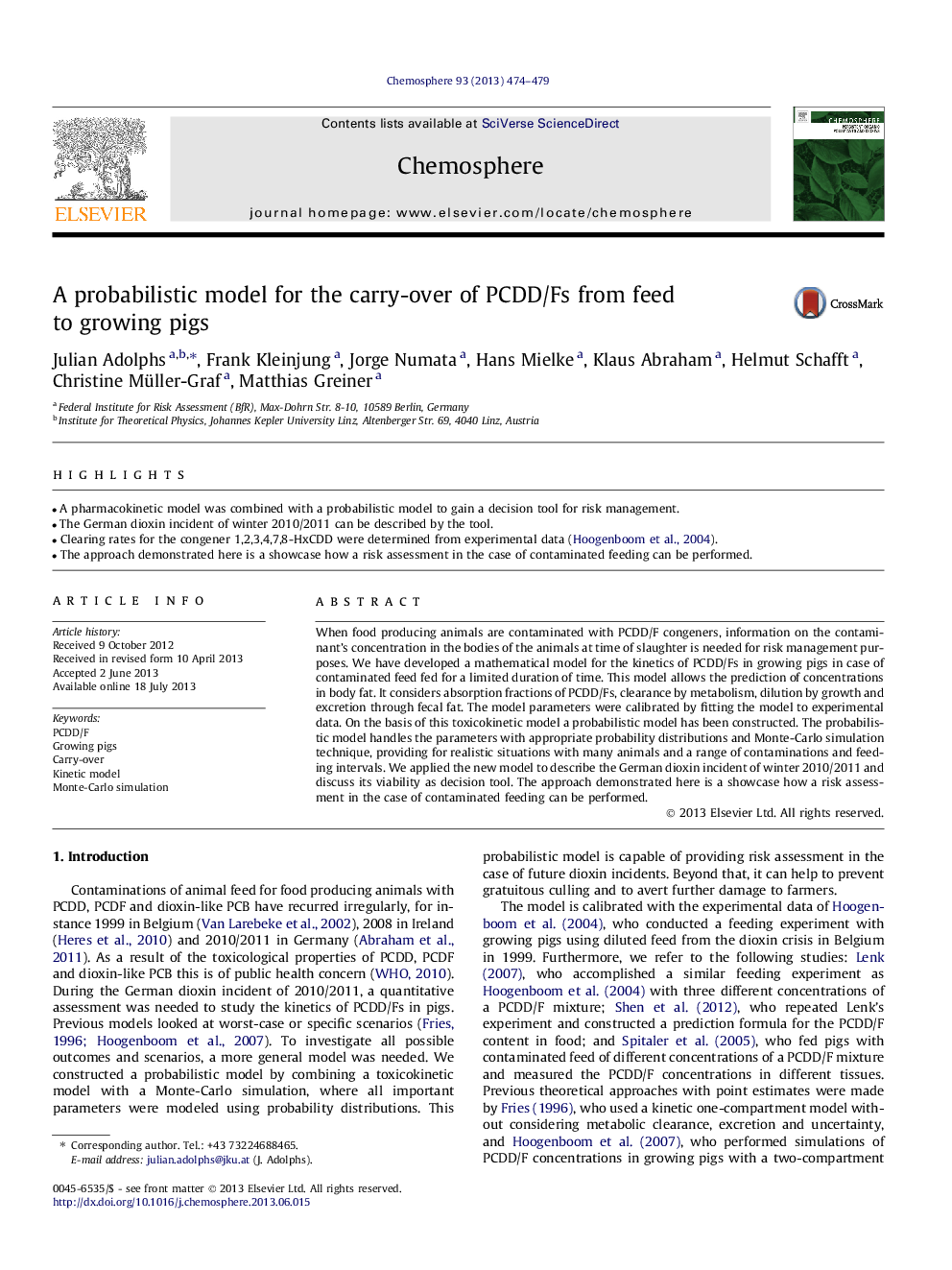| Article ID | Journal | Published Year | Pages | File Type |
|---|---|---|---|---|
| 4409158 | Chemosphere | 2013 | 6 Pages |
•A pharmacokinetic model was combined with a probabilistic model to gain a decision tool for risk management.•The German dioxin incident of winter 2010/2011 can be described by the tool.•Clearing rates for the congener 1,2,3,4,7,8-HxCDD were determined from experimental data (Hoogenboom et al., 2004).•The approach demonstrated here is a showcase how a risk assessment in the case of contaminated feeding can be performed.
When food producing animals are contaminated with PCDD/F congeners, information on the contaminant’s concentration in the bodies of the animals at time of slaughter is needed for risk management purposes. We have developed a mathematical model for the kinetics of PCDD/Fs in growing pigs in case of contaminated feed fed for a limited duration of time. This model allows the prediction of concentrations in body fat. It considers absorption fractions of PCDD/Fs, clearance by metabolism, dilution by growth and excretion through fecal fat. The model parameters were calibrated by fitting the model to experimental data. On the basis of this toxicokinetic model a probabilistic model has been constructed. The probabilistic model handles the parameters with appropriate probability distributions and Monte-Carlo simulation technique, providing for realistic situations with many animals and a range of contaminations and feeding intervals. We applied the new model to describe the German dioxin incident of winter 2010/2011 and discuss its viability as decision tool. The approach demonstrated here is a showcase how a risk assessment in the case of contaminated feeding can be performed.
